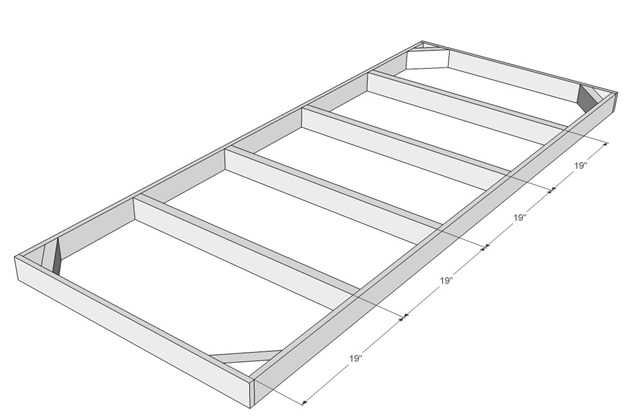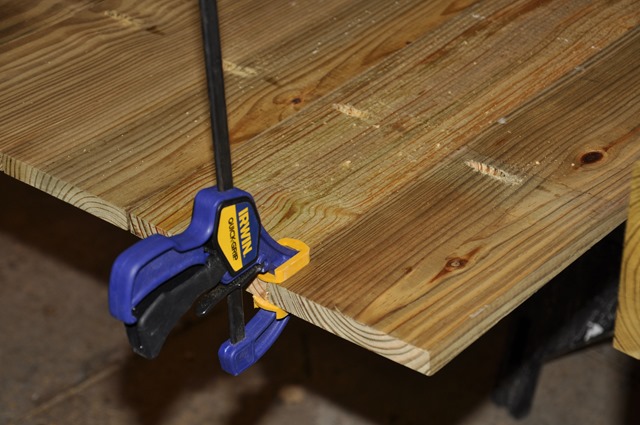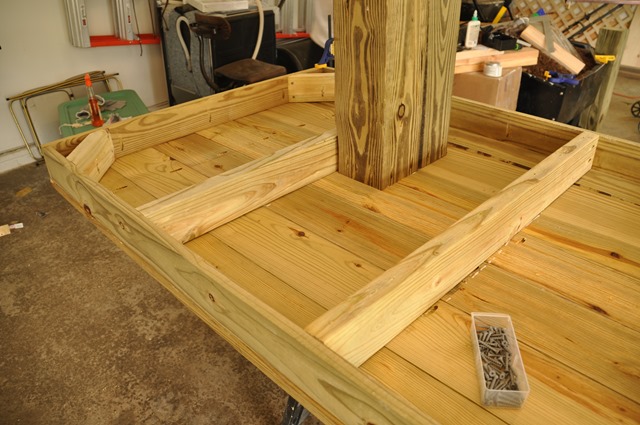DIY Outdoor Patio Table Tutorial
/On Monday, I shared with you our newly built outdoor patio table.


Today we’re back with a tutorial so you can make your very own. The tutorial is wordy but we tried to include as many descriptions/instructions as possible. We hate starting projects to find that the tutorial left out an important step or isn’t quite clear. Feel free to ask any questions. We’ll answer them in the comment section below.
The table cost us about $150 to build. Pressure treated wood is more expensive. You could choose a less expensive wood. We’re hoping that the pressure treated will better withstand the elements. Do take proper precautions when working with pressure treated wood. Wear a mask when cutting and sanding. Wash hands well after handling the wood. There are some concerns about pressure treated wood not being safe to eat from. After much reading, we determined that it was the right choice for us. We sealed the table and have no plans to eat directly off it. It’s also not a table that we eat at every day so we feel the benefits of the pressure treated wood outweighed the risks for us. You choose what’s best for you!
Also, please excuse our disgusting hot mess of a garage in the photos below. Cleaning it is on our to-do list. We are two of the neatest and tidiest people but for some reason, our garage can never stay clean. Ever. There is some kind of law against it. And it won’t stop raining in Iowa so all of our pictures are taken in our disgusting/poorly lit garage. At least there are pretty sketch-up drawings? Carry on.
Material List
- All boards pressure treated
- 2"x4"x8' – 2
- 1"x4"x8' – 3
- 1"x6"x8' – 7
- 6"x6"x8" - 3
- 1 1/4" outdoor screws (if you can find them for the kreg jig they are blue coated, otherwise any other outdoor screws will work)
- kreg jig
- Outdoor wood glue (we used Titebond III)
- 3" outdoor screws
Cut List
- 1x4
- 94.5" - 2
- 38.5" - 2
- 2x4
- 37" – 4
- 5" inside tapered out at 45 degrees for corner supports (can be approximate)
- 6x6
- 30" - 8
Directions
Glue one side of a 6x6 to another 6x6 to make one leg that is 11"x5.5"x30". It is best to clamp these together overnight. If you do not have clamps big enough for these, I think putting something heavy on it will work just fine. Once dried overnight, sand smooth.


Using pocket hole screws, attach the 94.5" 1x4 to the 38.5” with the 1 1/4" outdoor screws and wood glue (do not use the regular kreg screws as they will rust with the pressure treated wood/weather conditions). If you just have deck screws like I did, just make sure not to screw them too far as they will pop out the other side of the board.

Put the 37" center supports in at 19" intervals using glue, 1 1/4" screws and pocket holes.

Drill straight down on the long sides of the corner supports so the hole comes out the middle of the 45 degree cut. Using wood glue and 1 1/4" screws put in all 4 corners.

Put pocket holes in each center support (I did 3) and in the center supports and on the edges.
Check to make sure the 1x6 boards are 96" (mine were all uneven lengths longer than 96"). Place 4-5 pocket holes in each board, besides the last one, and using 1 1/4" screws and glue attach boards together for the table top. I found it helpful to have a large clamp to help pull uneven boards together. Flip so top is up, sand out any unevenness. (Ignore the legs in the following photo.)



Flip top back over. Put glue on top of the structure built earlier, flip down on top of the table top, screw together to top.

While it still upside-down, on the outside 2x4 supports, measure 18" from each side, this is where the insides of the legs will go. Make sure to mark the side of the board that is closest to the middle.


Put pocket holes on the 3 sides of the legs that will not be touching the 2x4 support. Using glue place on the upside down table, using 1 1/4 screws in the pocket holes, and after drilling pilot holes in the 2x4 support (I did 4 in each 6x6, or 8 in each leg) attach with the 3" screws. It might be best to stain the inside of the legs before attaching them as there is only 1" in between, we were able to get it stained with brushes after, but would be much easier before.

Once all legs are attached, it is time to flip it back over. You will want friends for this as it is heavy and awkward. We had four of us (one on each corner).

Stain with a outdoor stain/sealant or stain and outdoor poly. We used Olympic Maximum (Stain + Sealant in One) in Oxford Brown. We liked the fact that it was one coat and we were done. Let dry and then you are ready to enjoy your new table.



See the full reveal here!
Any big outdoor patio plans this summer? I need to get to hosting an outdoor gathering soon!













